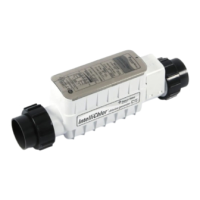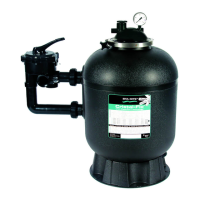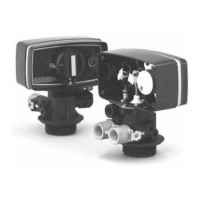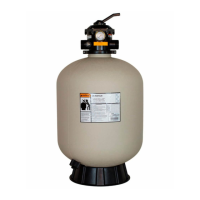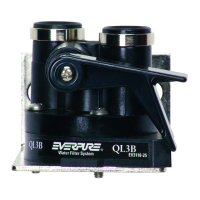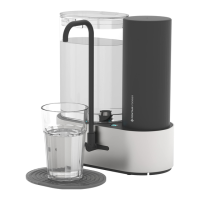14
English
Secon 3
Operang iCHLOR™ Salt Chlorinator
This secon describes the startup procedure and operang instrucons for iCHLOR Salt Chlorinator.
Before starng up and operang iCHLOR, the pool in which the iCHLOR will be used must have been completed and lled
with water for at least one (1) month (for plaster pools) and the pool water salt level must be stable and being maintained
at 3.300 to 3.600 ppm.
Inial Startup Period
For the rst thirty (30) days of cell operaon, the self-cleaning cycle, is factory set to two (2) hours. Aer thirty (30) days has
elapsed, iCHLOR will automacally set itself to three (3) hour self-cleaning cycle. This feature will clean the iCHLOR blades
more oen during the inial installaon, then go to a more standard self- cleaning cycle for longer blade life.
Operaon
Use of an external Pool Pump Timer is not required
The iCHLOR is designed to supply a sucient amount of chlorine to sanize pool water on a daily basis. If the pool pump is
connuously running and the iCHLOR is operated 24 hours a day at 100%, more chlorine would be generated than would
be needed by most pools (2-4 ppm, per APSP recommendaons). The iCHLOR has its own internal mer which cycles the
electrolyc cell on and o depending on what percent the Sanizer Output is set.
The iCHLOR is designed only to produce chlorine. The iCHLOR does not monitor or control chlorine levels in the
pool or spa water. It is the pool owner’s responsibility for monitoring and maintaining free chlorine levels at
2.0 to 4.0 parts per million (ppm) according to APSP recommendaons. It is the pool owner’s responsibility to check the free
chlorine level while the pool pump is running on a regular basis, and adjust the Sanizer Output on the iCHLOR accordingly.
Before aempng to operate iCHLOR refer to “General Recommendaons and General Cauons”, at the end
of this secon, and “Pool Water Preparaon” in previous secon. Also, do not adjust Sanizer Output above
20% unl it is certain that salt has been dissolved in your pool. Operang without salt will result in the unit turning o and
lighng the ADD SALT light on the salt display. No chlorine will be produced unl salt is added to the pool.
If you use a Pool Pump Timer
The Associaon of Pool and Spa Professionals (APSP) recommends that all water in a residenal pool pass through the
ltraon system at least once every 24 Hours (referred to as pool water turnover). However, many factors have an eect on
actual pump and lter system run mes. Pool size, source of water, direct sun light, indoor/outdoor, screened/unscreened,
ltraon system, cold or hot weather, swimmer load, rain, organic debris, algae, etc., are all factors which contribute to either
more or less pool pump and lter system run mes. Because of these dierences, it is extremely dicult to set a standard
inial run me (starng point) for the pool pump and chlorinang system.
Try inially seng the pool pump mer to twelve (12) hours. It will take a few days to achieve the correct amount of pool
pump operang me. When iCHLOR is wired with a pool pump mer, results will vary greatly from one pool installaon to
the next, so this should be discussed with your pool professional. The key points are:
• Operate the pool pump at least the minimum me needed for good ltraon and adequate chlorine producon by the
iCHLOR, according to your pool professional’s recommendaons.
• While pool pump mers can reduce energy consumpon, the pool pump must be running for the iCHLOR Salt Chlorinator
to provide chlorine and must remain running long enough to maintain proper chlorine levels (i.e., 2.0 - 4.0 ppm of free
available chlorine).
Note: Excepon - For Cold Weather Operaon: The unit turns o in water temperatures below 12° C, and will not produce
chlorine. This feature extends the life of the cell.

